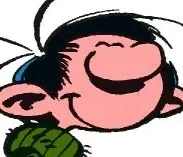This is a sprawling, semi full-on abusively erotic (see EDITs below), sci-fi / post-apoc series which also has philosophical and dreamlike overtones. Like many Italian series, I find it hard to make sense of it all, altho to be fair I’ve only ever read a couple of the stories in the classic Heavy Metal / Métal hurlant magazines.
Altho I’m not opposed to some eroticism here & there, the two things that make it hard for me to get in to this series (officially called Morbus Gravis) is that every single album is evidently sexual-themed, and that Druuna the character is largely passive… and generally the sexual pawn of others.
In terms of positives, the cross-hatched line & watercolor art is pretty fabulous, and I salute Serpieri’s imaginative concepts and plot turns.
I doubt I’ll be posting much more Druuna here, but wanted to share at least one.
EDIT: Due to the valid rebuttal below, I’ll link to the WP article, which pulls no punches in detailing the more sordid stuff. [HERE]
EDIT2: Interesting article here breaking down the dynamics of Druuna. Frankly, I’m glad I only read the ‘light’ stuff in Heavy Metal, and not the hardcore material in the books. :S


Haha, fair enough. But for one, I can only report on the reprinted stories I read, which were probably on the tamer side.
Another aspect is that “semi-erotic” in actual graphical depiction is really the most extreme I found it, sexually (edit), so I leave it to readers like you to point out the tawdrier conceptual aspects. I did find the lead frequently objectified though, which somehow was worse than the base graphical aspects, if that makes sense.
And as I’ve already pointed out, I do find there’s more to the stories than just the erotic stuff, such as the reader (through Druuna) being led along twisting, dreamlike paths, questioning what’s real and what’s not. Anyway, I’ll link to the WP article above, which pulls no punches from what I can tell.
I hear ya, throughout, though I had no idea that there were other less explicit versions of the (quite) graphic novel in circulation; I only ever saw the over the top, borderline art (were it not for the exquisite inkwork and blocking, that is), to be clear. 😶
Oof, the more I understand what went on in the books, the more I feel like an idiot. So I’ve made a few more corrections to the article, and added a further analysis in “EDIT2.”
Thanks again for setting me on the right course. 😬
Not at all! Don’t you worry, you didn’t come across as an idiot in any way throughout. Please, continue sharing your opinions here with us all, especially if you’re so willing to let them grow with new experiences. That’s a sign of wisdom, honestly. Keep it up! 🤌🏼🥳
In honor of your edifying edits, may I offer this from the article you linked in Edit 2: “…which feels like an argument for the platonic ideal of looking at women without talking to them…”
To be utterly clear, the “platonic” ideal, a la Plato, was a power dynamic that is wholly frowned upon if not outright outlawed in today’s world: teacher & student. (Depending on the age of the latter; ie. collegiate = shameful) And yet, the modern usage of it has allowed for an incredible amount of slack to be inferred in its deployment, going so far as to essentially describe “deep & abiding love without a sexual component”… Which, IMHO, flies in the face of its very namesake. I mean, FFS, it was named after his proclivity to leverage his status to prey on his young male students. 🤦🏼♂️ Ah, vernacular drift, you blameless cuck.